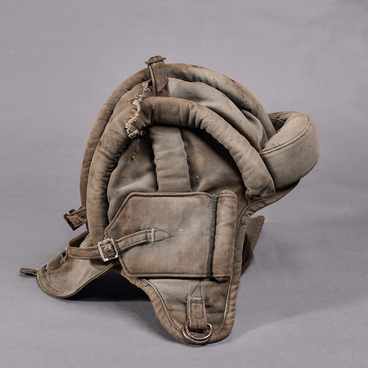The photo album presented at the exhibition was the gift of the Red Army soldiers to Lieutenant General Nikanor Zakhvataev in memory of the battles of the 7th Guards Rifle Division, which he commanded.
Zahvataev was born in 1898 in Gary village, Malmyzhsky district, Vyatka province. He served in the Russian Imperial Army since 1916. Zahvataev left the school of ensigns, took part in the First World War, on the Southwestern and Romanian fronts. Since 1918, Zahvataev served in the Red Army, took part in the battles of the Civil War. In 1930, he finished the advanced training courses of the command staff of the Workers' and Peasants' Red Army ‘Vystrel’, in 1935 — the Military Academy named after Mikhail Frunze, and in 1939 — the Academy of the General Staff of the Red Army. Zahvataev held various command positions and also taught at the Tactics Department of the General Staff Military Academy.
When the Great Patriotic War began, Zahvataev immediately went off to the front in June 1941.
He served as the commander of the operational department of the headquarters of the Southwestern Front, the 1st Shock Army Staff Chief, then was the rifle corps commander, the 1st Shock Army commander. Zahvataev became commander of the 4th Guards Army in May 1945.
For skillful management of forces during the Hungary liberation from the Nazis forces, and also for the courage and heroism shown during the Vienna storming, by decree of the USSR Supreme Soviet Presidium dated April 26, 1945, Zahvataev was awarded the title Hero of the Soviet Union.
During the war, the Supreme Commander mentioned Zahvataev 13 times in his gratitude orders. On June 24, 1945, he participated in Victory Day Parade on Red Square in Moscow with the rank of Colonel-General.
Later, Zahvataev participated in the Soviet-Japanese War, he commanded the 35th army. He continued to command various military formations after the end of hostilities. Between 1957 and the 1960s, Zahvataev held the position of military adviser to the Hungarian People’s Army. In 1960, he retired with the rank of Guards Colonel-General.
Zahvataev was born in 1898 in Gary village, Malmyzhsky district, Vyatka province. He served in the Russian Imperial Army since 1916. Zahvataev left the school of ensigns, took part in the First World War, on the Southwestern and Romanian fronts. Since 1918, Zahvataev served in the Red Army, took part in the battles of the Civil War. In 1930, he finished the advanced training courses of the command staff of the Workers' and Peasants' Red Army ‘Vystrel’, in 1935 — the Military Academy named after Mikhail Frunze, and in 1939 — the Academy of the General Staff of the Red Army. Zahvataev held various command positions and also taught at the Tactics Department of the General Staff Military Academy.
When the Great Patriotic War began, Zahvataev immediately went off to the front in June 1941.
He served as the commander of the operational department of the headquarters of the Southwestern Front, the 1st Shock Army Staff Chief, then was the rifle corps commander, the 1st Shock Army commander. Zahvataev became commander of the 4th Guards Army in May 1945.
For skillful management of forces during the Hungary liberation from the Nazis forces, and also for the courage and heroism shown during the Vienna storming, by decree of the USSR Supreme Soviet Presidium dated April 26, 1945, Zahvataev was awarded the title Hero of the Soviet Union.
During the war, the Supreme Commander mentioned Zahvataev 13 times in his gratitude orders. On June 24, 1945, he participated in Victory Day Parade on Red Square in Moscow with the rank of Colonel-General.
Later, Zahvataev participated in the Soviet-Japanese War, he commanded the 35th army. He continued to command various military formations after the end of hostilities. Between 1957 and the 1960s, Zahvataev held the position of military adviser to the Hungarian People’s Army. In 1960, he retired with the rank of Guards Colonel-General.
Zahvataev passed away on February 15, 1963. One of the streets in Kirov was named after him.



